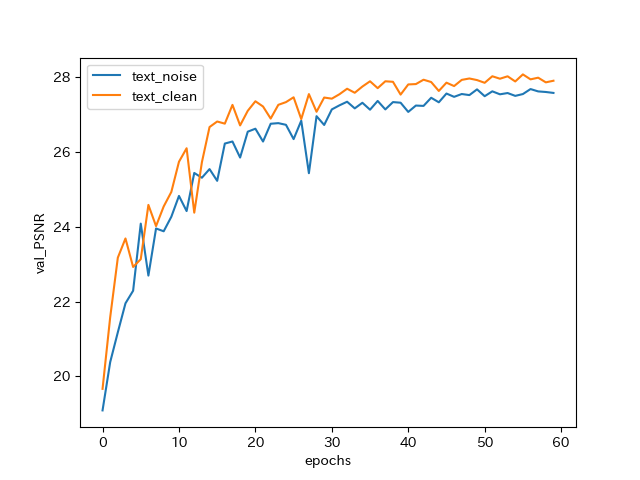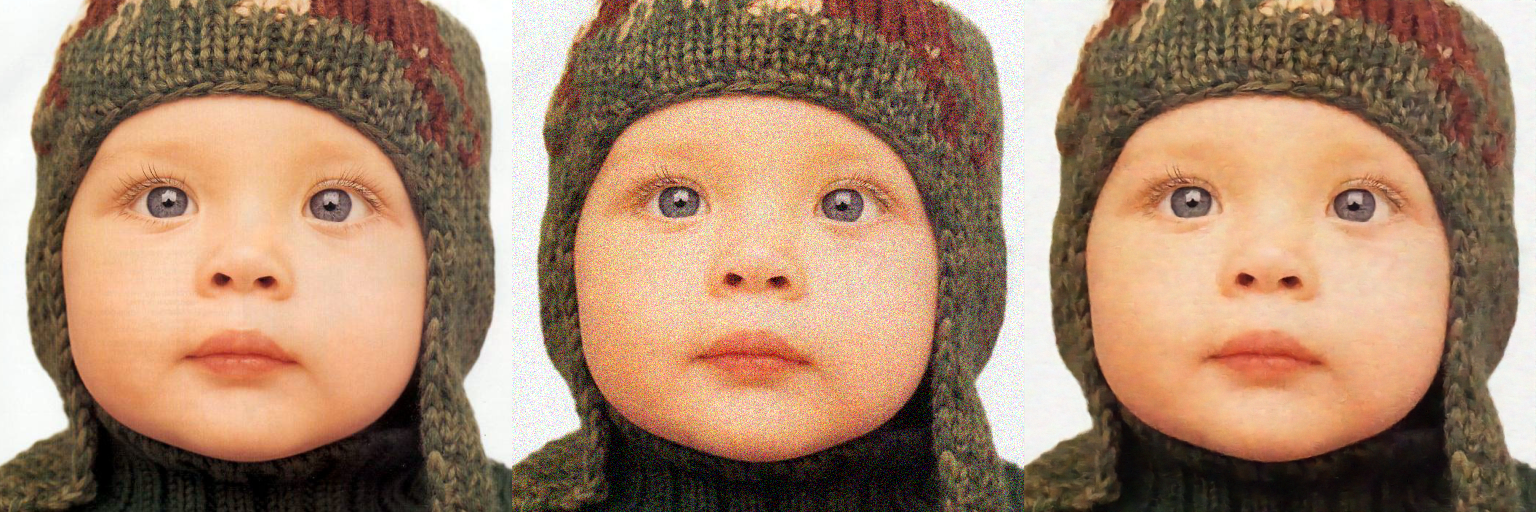This is an unofficial and partial Keras implementation of "Noise2Noise: Learning Image Restoration without Clean Data" [1].
There are several things different from the original paper (but not a fatal problem to confirm the noise2noise training framework):
- Training dataset (orignal: ImageNet, this repository: [2])
- Model (original: RED30 [3], this repository: SRResNet [4])
- Keras, TensorFlow, NumPy, OpenCV
mkdir dataset
cd dataset
wget https://cv.snu.ac.kr/research/VDSR/train_data.zip
wget https://cv.snu.ac.kr/research/VDSR/test_data.zip
unzip train_data.zip
unzip test_data.zip
cd ..# train model using (noise, noise) pairs (noise2noise)
python3 train.py --image_dir dataset/291 --test_dir dataset/Set14 --image_size 128 --batch_size 8 --lr 0.001 --output_path gaussian
# train model using (noise, clean) paris (standard training)
python3 train.py --image_dir dataset/291 --test_dir dataset/Set14 --image_size 128 --batch_size 8 --lr 0.001 --target_noise_model clean --output_path clean# train model using (noise, noise) pairs (noise2noise)
python3 train.py --image_dir dataset/291 --test_dir dataset/Set14 --image_size 128 --batch_size 8 --lr 0.001 --source_noise_model text,0,50 --target_noise_model text,0,50 --val_noise_model text,25,25 --loss mae --output_path text_noise
# train model using (noise, clean) paris (standard training)
python3 train.py --image_dir dataset/291 --test_dir dataset/Set14 --image_size 128 --batch_size 8 --lr 0.001 --source_noise_model text,0,50 --target_noise_model clean --val_noise_model text,25,25 --loss mae --output_path text_cleanPlease see python3 train.py -h for optional arguments.
Using source_noise_model, target_noise_model, and val_noise_model arguments,
arbitrary noise models can be set for source images, target images, and validatoin images respectively.
Default values are taken from the experiment in [1].
- Gaussian noise
- gaussian,min_stddev,max_stddev (e.g. gaussian,0,50)
- Clean target
- clean
- Text insertion
- text,min_occupancy,max_occupancy (e.g. text,0,50)
You can see how these noise models work by:
python3 noise_model.py --noise_model text,0,50python3 plot_history.py --input1 gaussian --input2 cleanFrom the above result, I confirm that we can train denoising model using noisy targets but it is not comparable to the model trained using clean targets.
python3 test_model.py --weight_file [trained_model_path] --image_dir dataset/Set14Denoising result by clean target model (left to right: original, degraded image, denoised image):
Denoising result by noise target model:
Denoising result by clean target model
Denoising result by noise target model:
- Compare (noise, clean) training and (noise, noise) training
- Add different noise models
- Write readme
[1] J. Lehtinen, J. Munkberg, J. Hasselgren, S. Laine, T. Karras, M. Aittala, T. Aila, "Noise2Noise: Learning Image Restoration without Clean Data," in Proc. of ICML, 2018.
[2] J. Kim, J. K. Lee, and K. M. Lee, "Accurate Image Super-Resolution Using Very Deep Convolutional Networks," in Proc. of CVPR, 2016.
[3] X.-J. Mao, C. Shen, and Y.-B. Yang, "Image Restoration Using Convolutional Auto-Encoders with Symmetric Skip Connections," in Proc. of NIPS, 2016.
[4] C. Ledig, et al., "Photo-Realistic Single Image Super-Resolution Using a Generative Adversarial Network," in Proc. of CVPR, 2017.







